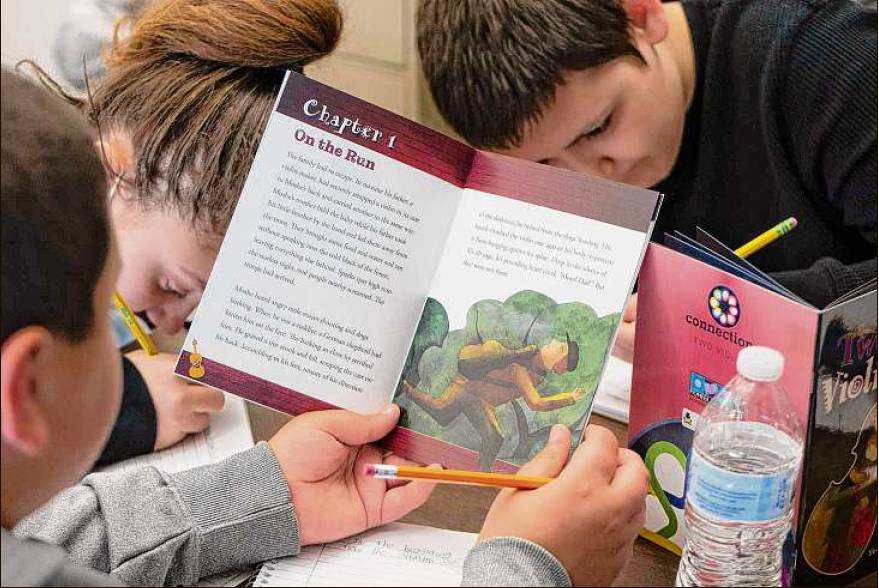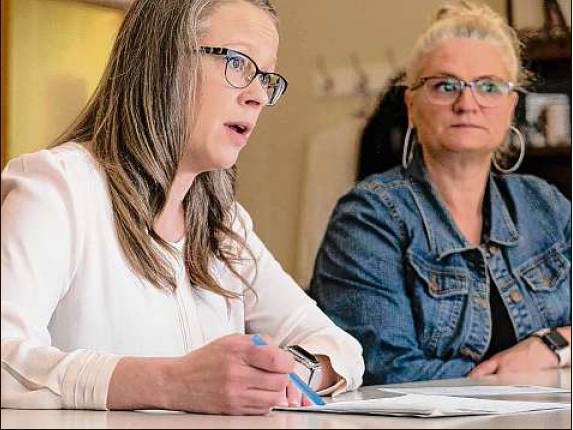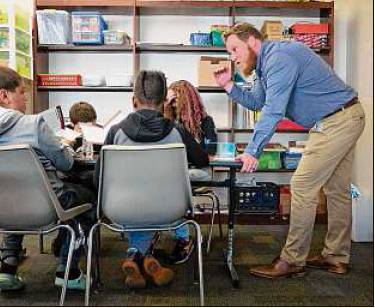EDUCATION
After sorting kids by skill, not grade, struggling school now cited as model
Percentage of Heatly students reading at grade level doubles in five months
By Kathleen Moore
Green Island
Three years ago at the village’s Heatly School, only 19 percent of elementary school students could read at grade level.
The state named the tiny one-building district a school in need of improvement.
So newly hired Superintendent Kimberly Ross presented the teachers with a wild idea. She proposed they all give up their typical classrooms, where they directly taught one group of students all day. Instead, she said, every morning she would flood the elementary school with every aide and special teacher in the district to create small reading groups organized by skill level.
It quadrupled the amount of direct instruction each child receives in reading and writing while allowing teachers to focus on each student’s skill level.
If staff focus on comprehension, students are grouped by their ability on that skill — whether that means putting a fourth-grader with first-graders or a second-grader with the fourth-graders. After 20 minutes on that skill, students move to a different group.
At first, it was intense. Getting the students into the right place with the right group was like “herding kittens” for the first two weeks, Ross said. And getting teachers used to teaching in this new way was not easy either.
Teachers raised many concerns. Among them: Wouldn’t that fourth-grader feel “dumb” for taking a lesson with first graders?
“But because everyone is mixed, kids just say, ‘I’m going to Mrs. Lawlor next.’ They don’t identify the teacher by grade level,” said Ross, who has a special education background and applied that thinking to the general education classrooms.
If those struggling students stayed in their fourth-grade classroom, she said, they might have felt intimidated for not being able to do a skill that their peers seemed to be doing effortlessly. With kids on the same level, they might feel safer learning.
Ross persuaded the teachers to take the leap by running a pilot program last year. It was limited, due to social distancing requirements during the pandemic, but they saw huge growth.
One student, who teachers were about to refer for special education testing, learned two years’ worth of reading and writing skills in one school year.
Teachers were convinced.
Last summer, they moved offices to create classrooms near each other so every student could more easily get to each group. This fall, they began running two-hour “literacy pods” every morning.
Five months in, most of the students have learned more than five months of reading skills and many of them much more.
“That’s what we needed — we needed accelerated growth” to catch the students up, Ross said.
Now, 38 percent of the elementary school students are reading at grade level, up from 19 percent five months ago. In two of the grades where no student was at grade level, a quarter of the students are reading proficiently now. In another grade, where 46 percent of the students started the year at grade level, 70 percent of the students are now reading at grade level.
The district has used internal assessments to track progress for the state Education Department, as well as the measurement that will be available after students take the state ELA test, results for which will be released in September. State officials visited two weeks ago and were so impressed that they asked for a full report on the program to be disseminated at a conference in May.
Next year, Ross will expand the idea to include an hour of math groups. Teachers are on board.
“Oh my gosh, it’s awesome,” said first-grade teacher Sarah Lawlor. “I’ve seen so much growth, it’s unbelievable.”
At the start of the year, she had some second-graders in her first-grade reading groups. They’ve moved on to their grade level now, and some advanced kindergartners have moved up to her reading groups.
Just as importantly, children seem to love it.
“It’s fun. You get to learn new stuff,” said 7-year-old Tanner Davis on Thursday.
Near her, a first-grader read the second half of a book with his teacher. As soon as he finished it, he flipped it back to the first page.
“Let’s read it again!” he said eagerly.


